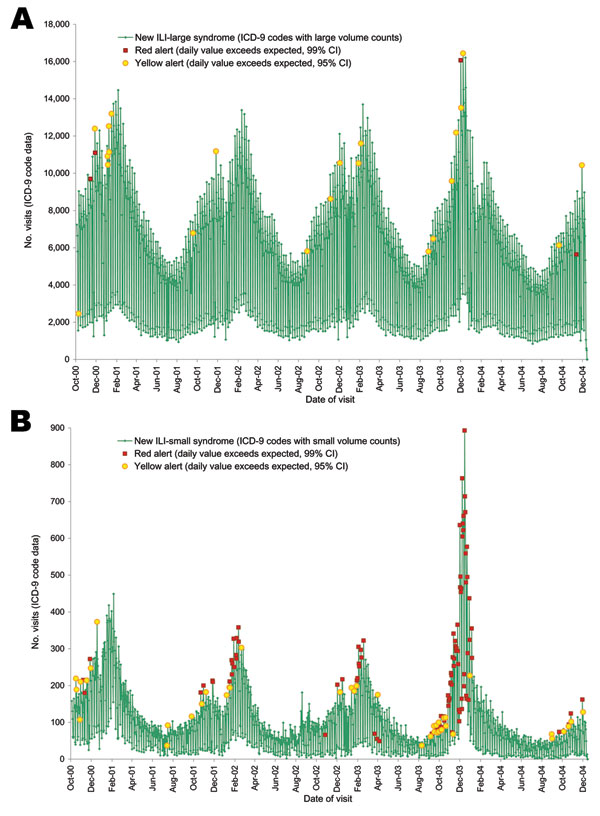Volume 13, Number 2—February 2007
Research
Code-based Syndromic Surveillance for Influenzalike Illness by International Classification of Diseases, Ninth Revision
Figure 3

Figure 3. Newly created groups of International Classification of Diseases, Ninth Revision (ICD-9), codes for influenzalike illness (ILI) based on correlation to positive cultures and signal-to-noise ratios were run with anomaly detection algorithms. Two groups, large and small, were created with ICD-9 codes that had an average use of >50× per day in the large group with the remainder in the small group. Daily counts of the codes in the Large and Small syndromic groups were plotted from October 2000 to December 2004. An algorithm based on a mixed time series model that combines regression and exponentially weighted moving average (EWMA) is used to detect potential outbreaks and takes into account weekends and holidays. Yellow alerts occur when the daily value exceeds that expected with a 95% confidence interval, and red alerts occur when the amount exceeds the expected with a 99% confidence interval. A) Large syndrome group. B) Small syndrome group.
1Current affiliation: Tacoma–Pierce County Health Department, Tacoma, Washington, USA
2Current affiliation: US Census Bureau, Suitland, Maryland, USA
3Current affiliation: Uniformed Services University of the Health Sciences, Bethesda, Maryland, USA